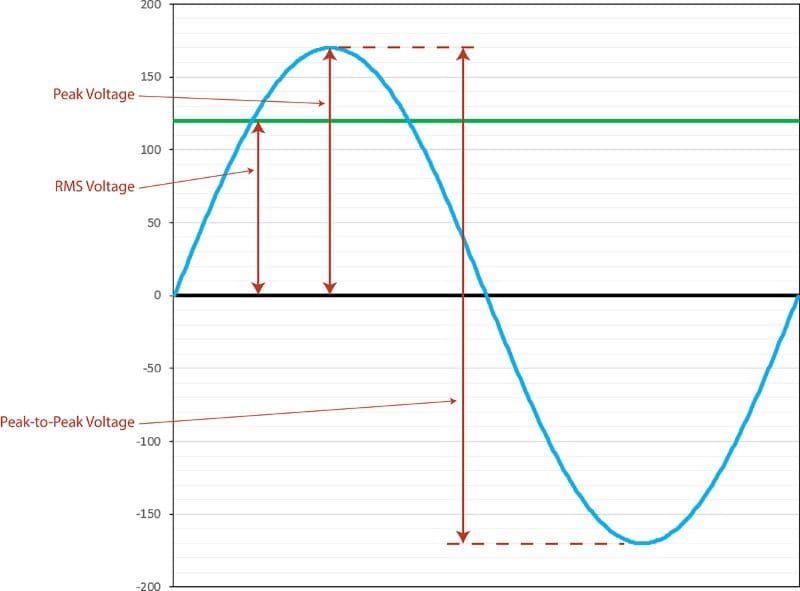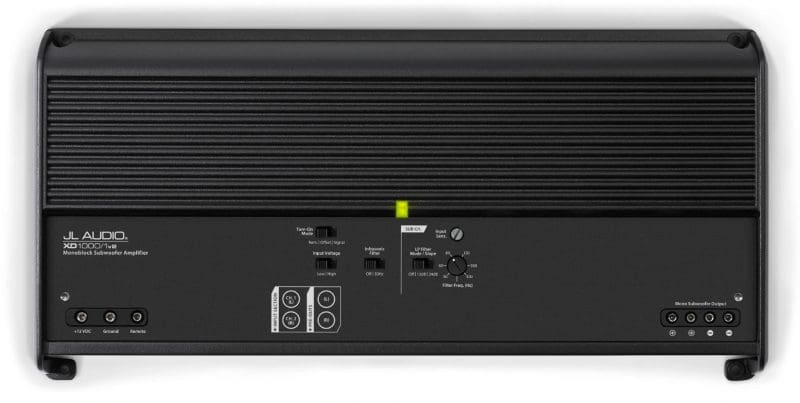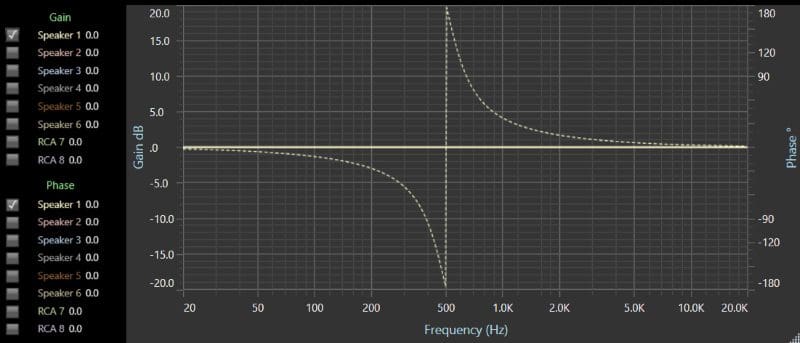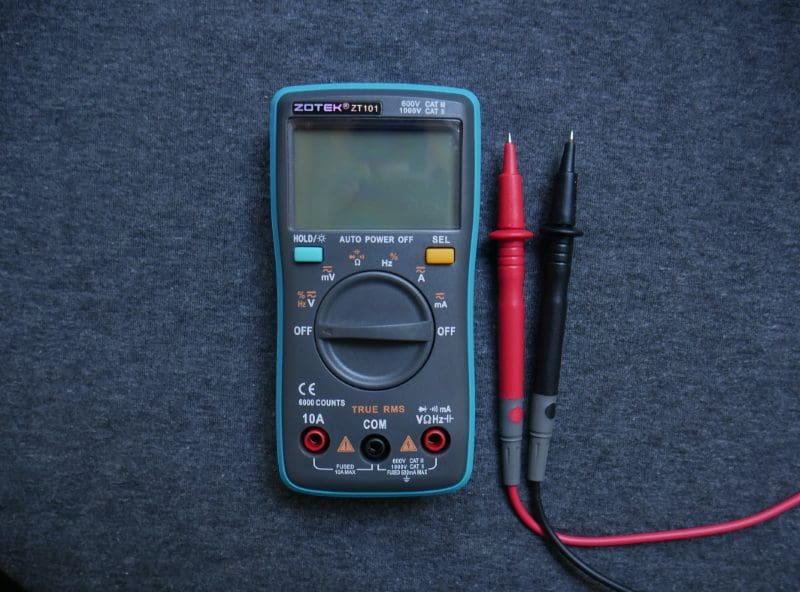It would be a gross understatement to say I spend a lot of time reading the content on car audio manufacturer websites and social media. The average day can involve a minimum of an hour researching information for articles, and sometimes it’s more than five or six hours. During this time, I see many terms passed down from model to model, even if they are technically incorrect. Let’s look at five terms that car audio enthusiasts and manufacturers always get wrong.
RMS Power Ratings
Every company that publishes amplifier power production and speaker power handling ratings seems to want to use the term RMS Power as a qualifier. Few statements display a more explicit demonstration of not understanding how power is measured or calculated than saying “RMS Power.”


Power (in watts) measures the work being done in a device or load. For electrical components like amplifiers and speakers, even a toaster, computer, light bulb or microwave, power is calculated by measuring the voltage applied to a load and the current flowing through the device. In a DC circuit, the measurements are straightforward. Voltage and current are effectively constant to each other, and we can take raw measurements from a voltmeter and current clamp to perform the calculations. If we measure 12 volts DC across a light bulb and two amps of current pass through it, then we know it’s consuming 24 watts of power.
Everything changes in circuits that have alternating current power sources. Audio waveforms or even the 120-volt outlet in the wall of your home or office are all AC. What complicates AC calculations is the need to measure what can be summarized as average power. Let’s look at what’s happening with a 120-volt outlet in your home.
Using a digital multimeter to measure the AC voltage that powers a computer or light bulb, you’ll get a reading of around 120 volts. This is called a root mean square, or RMS voltage. The RMS value of an AC waveform performs the same amount of work as a DC voltage of the same amplitude. So, if you stacked 10 car batteries together and wired them in series, you’d get about 120 volts DC. If you connected either 120 volts AC or 120 volts DC to a heating element, the same heat would be produced as the same work is done.
What’s complicated about the AC power coming from the wall is that the peak of the sine wave is up around 170 volts. This high peak level is offset by the fact that the voltage is also at zero 120 times a second as the current flow changes direction. What’s crucial to this discussion is that we always talk about AC voltage measurements in the context of RMS measurements, since we want to know the work done over a period of time.

To calculate the power delivered by an audio amplifier, professional technicians measure the RMS voltage that the amplifier produces. We either square that value and divide by the impedance of the load or speaker, or we multiply the RMS voltage by an RMS current measurement. The result is often mistakenly called RMS Power. All AC measurements are always calculated using RMS measurements, so anytime you see the word watt, it’s the result of RMS measurements. What manufacturers and enthusiasts want to quantify is continuous power. How much steady-state output can an amplifier produce? The amount of power an amplifier can produce should always be “X watts continuous power.”

Subsonic Filter
Many car audio subwoofer amplifiers have an adjustable or selectable high-pass filter intended to prevent very low-frequency information from passing through to the subwoofer. This filter is incorrectly labeled “subsonic” on most amplifiers on the market. In terms of a dictionary definition, the word subsonic refers to something traveling at less than the speed of sound. The antonym of subsonic would be supersonic, which relates to something traveling faster than the speed of sound. Purely for interest’s sake, the word hypersonic refers to something traveling more than five times the speed of sound.
A correct term for this high-pass filter is “infrasonic.” The word infrasonic refers to audio frequencies that are below the audible range. We consider 20 hertz to be the lowest frequency we can hear. Since many of these filters are adjustable as high as 30 or 50 hertz, they should just be called high-pass filters. Trying to be cool using fancy words doesn’t always mean the information is accurate. Again, as semi-relevant information, the antonym of infrasonic is ultrasonic, which refers to frequencies above the range of human hearing, or those beyond 13 to 20 kHz, depending on age.


All-Pass Filters
Speaking of filters, there are several car audio amplifiers with high- and low-pass filter function switches labeled with LP, AP and HP. These abbreviations refer to Low-Pass, All-Pass and High-Pass. The intent of the All-Pass filter, in this context, is that all audio frequencies are passed through the device. In essence, the filter is off. As such, the label should say “Off.”
To complicate matters, an all-pass filter is a thing. When calibrating a digital signal processor in a vehicle where both the driver and passenger wish to enjoy good imaging and tonal balance, technicians use all-pass filters that affect the phase of an audio signal without affecting its frequency response. The technician can pick a frequency and bandwidth, and the all-pass filter will invert the audio signal phase at that frequency by 180 degrees. It’s complicated, but it works well when calibrated properly to deliver excellent midbass and midrange tonal balance in these systems.

Phase Switch
In the context of audio signals, the word phase describes the relationship between successive states of a waveform or two different signals. When we adjust the phase, we advance or delay one signal relative to another. Car audio systems typically do this with delays in digital signal processors. For example, in a system calibrated for a single listening position, the output of the closer speakers would be delayed such that all frequencies arrive at the same time as those from the passenger-side speakers. We call this “putting both channels in phase.”
The word phase is used incorrectly (in absolute terms) on subwoofer amplifiers or the subwoofer outputs of many source units. These devices often have an adjustment labeled “phase” when the switch doesn’t advance or retard the audio signal relative to anything else; it simply inverts its amplitude. The correct term for this function is a polarity switch. When your speakers and subwoofers are installed, the technician working on your vehicle should be using a real-time audio analyzer to confirm that the output of both your midbass drivers and subwoofers is summing constructively at the listening position. If the subwoofers are facing rearward, it might be necessary to reverse their polarity, so the signals add together around the crossover point. Phase adjustments between the subwoofers and midbass speakers are entirely different and are typically handled with delays or all-pass filters.

Ohm Loads
Here’s one that is almost exclusively an issue with consumers. I often see a sentence like “you need to check your ohm loads.” The unit ohm is what we use to describe resistance, or more specifically, the opposition to the current flow. In the context of car audio systems, a load usually describes a speaker or subwoofer. In automotive electrical terms, a load could also be a light, fan or motor.
This goes wrong because the word “load” is the noun in this sentence. It’s the item we are describing. The term “ohm” isn’t an adjective. It’s not capable of being used to describe the noun. You’d never say you wanted a “watt subwoofer” or a “volt speaker.” There needs to be a word in front of “ohm.” A proper sentence would be “I need a 4-ohm speaker.”
More often than not, the word impedance should be used instead of ohm. For example, “This amplifier makes more power when driving a low-impedance load” or “If you decrease the load impedance, the amp will attempt to deliver more current.” The words ohm and load can go together if there’s a value in front of ohm. For example, “This amplifier produces the most power when driving a 4-ohm load in a bridged configuration.”

Being Picky About Car Audio Terminology
While we acknowledge that the presence of a feature is far more critical than how it might be labeled and that English is sometimes hard, someone needs to be a stickler for accuracy. The goal of BestCarAudio.com is to educate consumers about the best options to upgrade their vehicles and explain how these products work. If you’re shopping for an amplifier or speakers for your car or truck, drop by a local specialty mobile enhancement retailer and ask them what they have available to make your time behind the wheel more enjoyable.

